January 29-30, 2022
We woke at 4:30 am so we could arrive two hours ahead of our early morning flight from the Pereira airport. As promised, the hotel staff had a small takeaway breakfast ready for us and the taxi they arranged was waiting when we came down to the lobby.
When we got to the airport, we quickly concluded that the two-hours-in-advance flight arrival had been unnecessary and we could have slept an extra hour, as the airport was nearly empty and quite efficient. The first flight was to Bogota and took only about 45 minutes. After a short layover, we boarded our second flight to Leticia, Colombia, a small city in the Amazon rainforest.
As the plane we lifted off the runway, I heard a loud thud and then Susan and I both vaguely smelled something burning. Neither of us mentioned anything but a little while later I noticed that the plane seemed to have stopped climbing and felt like it was slowly turning around. Susan looked out the window and saw a large city below. She knew the map well enough to know there were no cities between Bogota and Leticia. Just as she asked me what city it could be, we saw the plane’s flaps lower and it was obvious we were getting ready to land—back in Bogota. Looking around the plane, we noticed passengers had a look of concern on their faces as the flight crew made several unintelligible announcements in rapid Spanish. When we touched down, the passengers erupted in applause and we knew something had been very wrong.
After deplaning, we were loaded onto buses to bring us back to the terminal. Once there, we found a Latam Airlines gate agent who spoke a little English and we finally learned what had happened. She explained that one of the engines had sucked in a bird, causing engine damage. “Bird strikes” can be devastating to airplanes, as they can cause engine explosions, fires and crashes. We were glad we hadn’t understood the announcement while on the plane, because we didn’t have to go through the fear we’d seen in other passengers’ faces. We considered ourselves lucky.
Sort of. The gate agent told us that the airline was locating another plane, we’d be underway in 20 minutes and we’d still arrive on time. Not trusting her math, we did a quick calculation of our own that revealed we’d have to exceed 1,000 mph to keep the schedule; we also knew how Latin American countries tended to view time. We were pretty sure wouldn’t make it to Leticia in time to exit Colombian immigration, get to Brazil to buy our boat tickets, and get to Peruvian immigration before the various offices closed. All the stress we went through last night regarding the timing of all that was now heightened.
So, while we were waiting to re-board, Susan approached the gate agent and asked if there was a flight to Lima we could take instead—figuring maybe it was time to follow “Plan B” and take an out-of-the-way and expensive flight to Lima and then another flight to Iquitos, Peru (where our prepaid, nonrefundable Amazon River jungle tour was to start) rather than flying to Leticia and chancing not doing all the things we needed to do to get a boat to Iquitos as planned. The agent checked and said there was a flight about to leave for Lima but even if we could make it in time there was no way to get our checked bags transferred to that flight.
Susan then used the slow airport internet and found there was a later flight to Lima and another to Iquitos that might work but in addition to being very expensive the timing was awful, including requiring an overnight in Lima. Again, there also was the problem of not being able to retrieve our luggage. I told Susan that shifting to the expensive Plan B option was unnecessary; the worst case was we’d be delayed a day in Leticia and we could just let the tour know we’d be late. Though it now was even less likely we could accomplish everything on time in Leticia, we again decided to stay with the original plan.
Susan later told me that she had a very strong intuitive feeling that we shouldn’t get on another plane to Leticia. We’d soon learn we should have trusted her gut.
Eventually, we boarded another plane in Bogota and flew to Leticia, one of the Tres Frontera towns named for the area where Colombia, Peru and Brazil all share a border along the Amazon River. We’d flown south across the equator (the first time for each of us) and when we arrived it was hot and steamy, especially in contrast to the cool Andean hills of the coffee region.
Upon arrival in Leticia, we visited the friendly migracion office at the airport and easily checked out of Colombia so we could check into Peru after we purchased our boat tickets. But when we asked the officer exactly where to find the Peruvian migration office (all we knew was it was near the town dock), he told us that due to Covid Peru was cerrado—closed—to all non-Peruvian visitors. That didn’t sound right since we’d confirmed repeatedly before our trip that the border restrictions applied only to unvaccinated visitors. Doubting what he said, we took a taxi to our US $26 hotel.
Upon arrival at the hotel, we explained to the desk clerk that we needed a taxi so we could quickly get to the boat ticket office and Peruvian immigration before they closed. It was obvious she’d been through this in the past and aware of our time crunch.
She seemed confident we’d make it in time if we moved quickly. We waited in the comfortable jungle-like lobby while she quickly summoned a tuk-tuk to take us to nearby Tabatinga, Brazil to get our boat tickets, then wait while we did that, and then take us to the dock where we’d find the Peruvian immigration office.
The tuk-tuk arrived in less than ten minutes and took us along one of the most bone-jarring roads we’d ever been on to the boat ticket office a few miles away in Brazil. En route, the signs changed from Spanish to Portuguese. As we’d hoped, there was no border check/immigration office to enter Brazil so that helped speed up our arrival at the ticket office.
Even with the delay from the bird strike, we’d made it before closing! But when we asked to buy tickets for the next ferry to Iquitos, which we believed would depart early the next morning, the ticket agent said there was no ferry. Not tomorrow. Not the next day. In fact, he couldn’t say when there’d be a ferry. By way of explanation, he then repeated what Colombian migration had said—the border was closed. A three-way Spanglish conversation ensued with the tuk-tuk driver, the agent and us where we learned that we could go to another boat company down the block that would sell us tickets for a smaller, slower boat that would leave the next day or maybe the day after that. However, being on the boat would be illegal and because the boats were routinely stopped for immigration inspections, we’d face fines of somewhere between US $300 and US $1,000 per person and we’d be forced to get off the boat at whatever point along the river where we were stopped. We decided not to risk it.
Back at the hotel, we used the molasses-slow internet and learned that the Covid rules had just changed a few days earlier. Under the new rules, foreigners were prohibited from entering Peru by water or land, but for some reason could still enter Peru via flights to Lima. We later learned that the new restrictions, while couched in terms of Covid, were more likely an attempt to keep out drug dealers and other riff-raff who had been recently crossing into Peru at its porous land borders.
Getting the boat had been the hardest part of the trip to plan and we’d been anxious about it due to the lack of information. And now there was no legal way we could travel by boat to Iquitos. And even if land entry were permitted, there were no roads through the dense Amazon jungle either to the small Tres Frontera area where we were or to Iquitos, a city of 700,000 people.
Flying would mean following a long circuitous route but it was the only option other than giving up on our scheduled Amazon tour that we anticipated would be one of the highlights of our trip. Giving up isn’t our style. So, Susan did what she does so well and searched for flights that could get us to Lima and then on to Iquitos. The tiny hotel deep in the Amazon jungle had very slow internet and frequently quit, making her job slow and frustrating.
Finally, Susan was able to book us flights. We’d have to fly back to Bogota (again!), then fly to Lima, have an overnight layover, then fly into Iquitos early in the morning. A planned two-hundred-mile boat trip would instead turn into three Latam Airlines flights encompassing some 2,500 air miles and costing almost US $700 per person. It wouldn’t be easy and would involve 24 hours of travel, but we’d come all this way and we were unlikely to ever be in the Amazon River area again. We choked back a shudder as we paid for the flights and figured we’d just eat less when we got home.
Flights purchased, we could at last relax. We walked into the town for dinner and were immediately struck by the frontier feel of the place.
We saw lots of police, soldiers, and many stray dogs. As we walked toward the central square, smoke and noise and flashing lights were all around us as a huge flock of parrots settled into the trees for the night. There were so many and they were so loud that their squawking sounded like bars of rebar being dragged down a street. The people were mostly young and the city was coming alive now that the sun was setting.
We found a restaurant where we shared a platter of a quarter chicken, beans and rice, a potato and plantain, along with delicious fresh fruit smoothies all for about US $2.50. As we ate, we watched the constant stream of motorcycles, tuk-tuks, a few cars and lots of people passing by. The city of 50,000, bordering two other countries, really had a wild feel.
Back at our hotel a little while later, we were thankful that the tiny room had a working air conditioner now that we were really in the tropics. Our room was extremely basic and pretty scruffy with a single working light bulb and an ancient bed but it was comfortable enough and the staff had been very helpful.
Before falling asleep, we discussed that we were glad we’d found a way to pivot and get around the new Covid border restriction. We expected beforehand that there would be some challenges on the trip but this one hit us pretty hard. We’d know tomorrow if we’d surmounted it.
In the morning we took cold showers—a shock to the system at first, but then refreshing. After a surprisingly nice breakfast at the hotel, we repacked our bags and prepared for the next leg. Susan’s diligence, despite the hotel’s faux-fi, had gotten us the required flights but we still had to work out some flight details so we arranged for a tuk-tuk to get us back to the airport well ahead of our departure.
At the airport, we found the Latam Airlines office, which was an actual office rather than a typical counter. We patiently waited while an extremely competent but very slow employee helped with seating assignments, baggage fees for the three flights we’d have today/tomorrow in two different counties, and lots of paperwork.
Because our second flight was an international one, the airline required us to show all sorts of documents. All the hours Susan had spent researching and filling out forms in advance was paying off. We wondered about those who hadn’t—we suspected their day would be much harder.
We were asked for our Covid vaccine card (while we were in Colombia, Peru began requiring a booster shot, which we thankfully had). Peru also required a special form that couldn’t be filled out more than 72 hours before entry into the country. We’d completed it and had screenshots on our phones; without that form, we couldn’t fly. Even after we’d finished all the paperwork with Latam, we had to pull out documents again when the local Leticia police wandered around the airport checking everyone’s ID and immigration status.
Traveling without some challenges was not what we expected, especially in a part of the world as remote as the Amazon jungle, so we anticipated some snafus. But at last everything was going smoothly. Once we boarded our flight, we experienced an odd feeling, going from the basic comforts (and discomforts) of a rural jungle town and airport to a modern airliner.
Our flight to Bogota was uneventful. So far, we’d been pretty impressed by the efficiency of South America’s airlines (though not so much with its airport bird life). I looked out the window as we flew over and (ironically) away from the Amazon River in Colombia, grateful we’d found a way to return to the river in Peru, even without a boat.
Upon arrival in Bogota, our third time at the airport in a 24-hour period, we soon realized we weren’t done with international red tape. We had to retrieve our baggage, hoof it to the international terminal, find the Latam counter there and recheck our bags for the next leg. Once again, we had to show proof of all three Covid shots, as well as passports and the required forms. We’d checked out of Colombia when we arrived in Leticia the day before and were given 24 hours to leave. At migration in Bogota, we were told we had to check back into Colombia, then back out again. After some confusion with a potential long delay at migration that almost brought Susan to tears, we boarded our next flight, to Lima.
The Lima airport was large but we easily navigated to migration and our luggage. Our problem now was that it was about 9:30 pm and our next flight wasn’t until 5:45 am the next morning. Exhausted, we walked across the street to a large Wyndham hotel and, for more than we wanted to spend, we got a nice room. By 10:30, we were in bed with an alarm set for 3:30 am. We figured five hours of comfortable sleep was better than trying to nap at the airport. Plus, the room had hot showers.

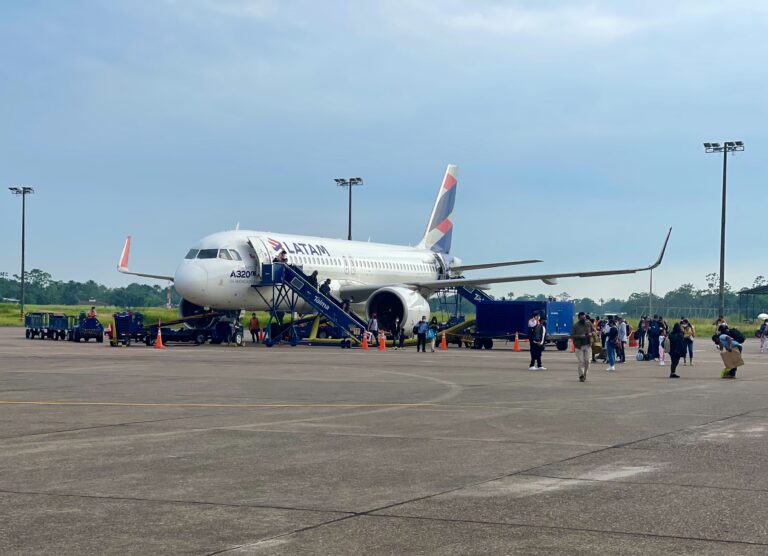
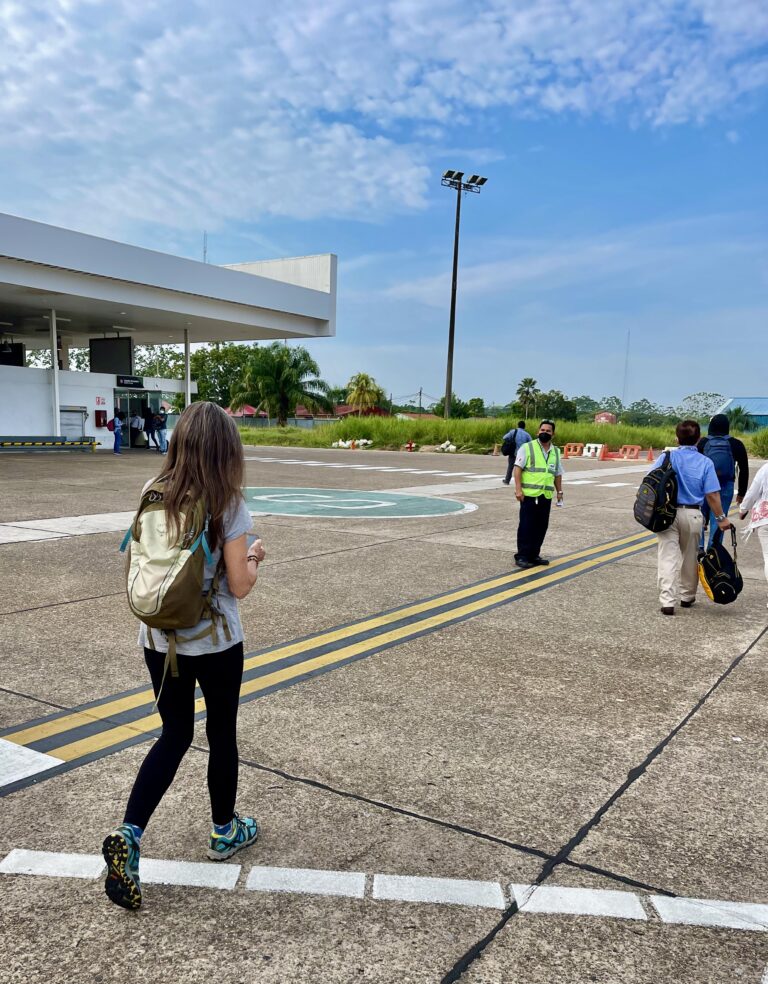
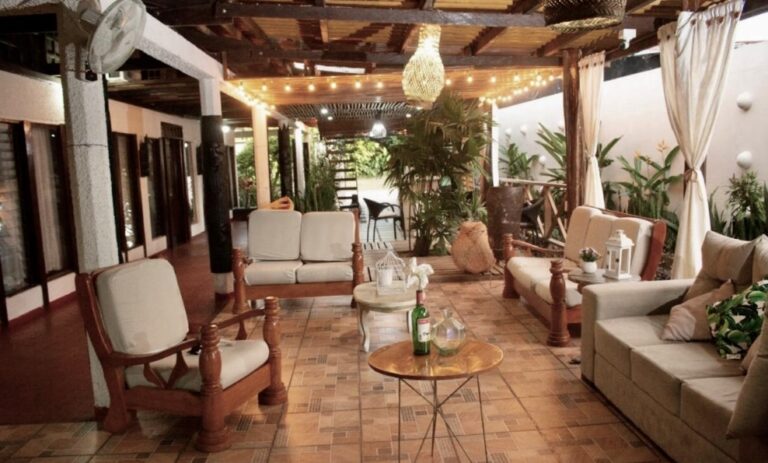
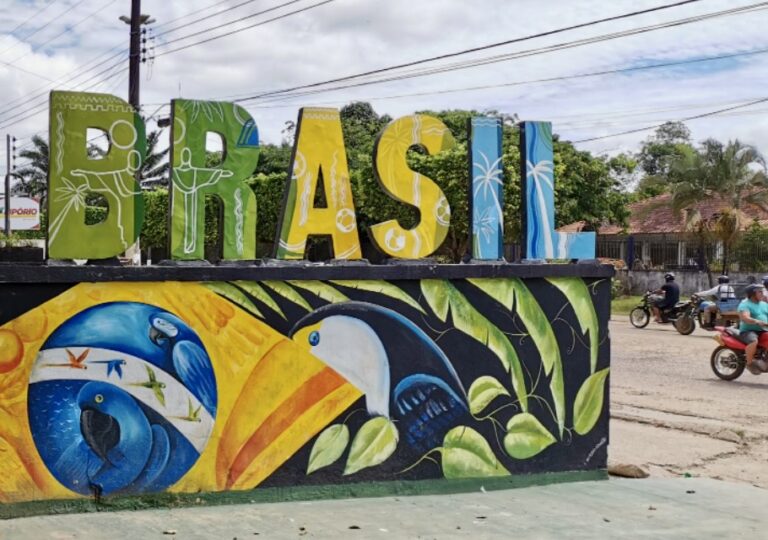
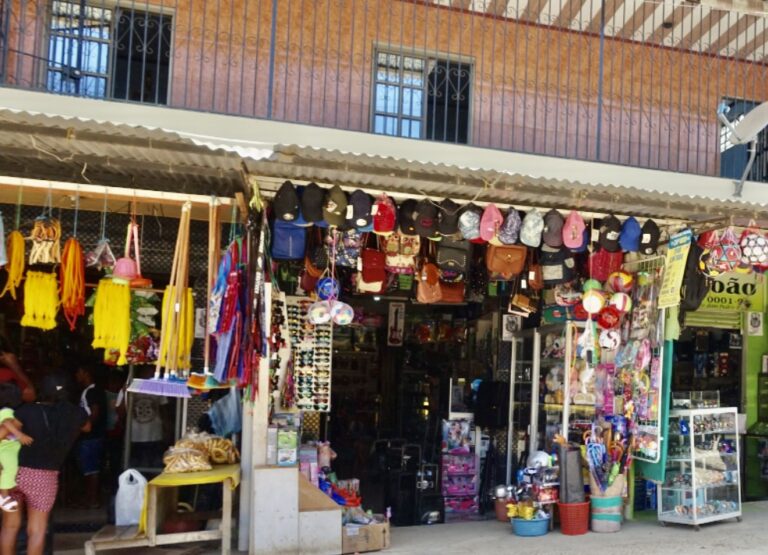
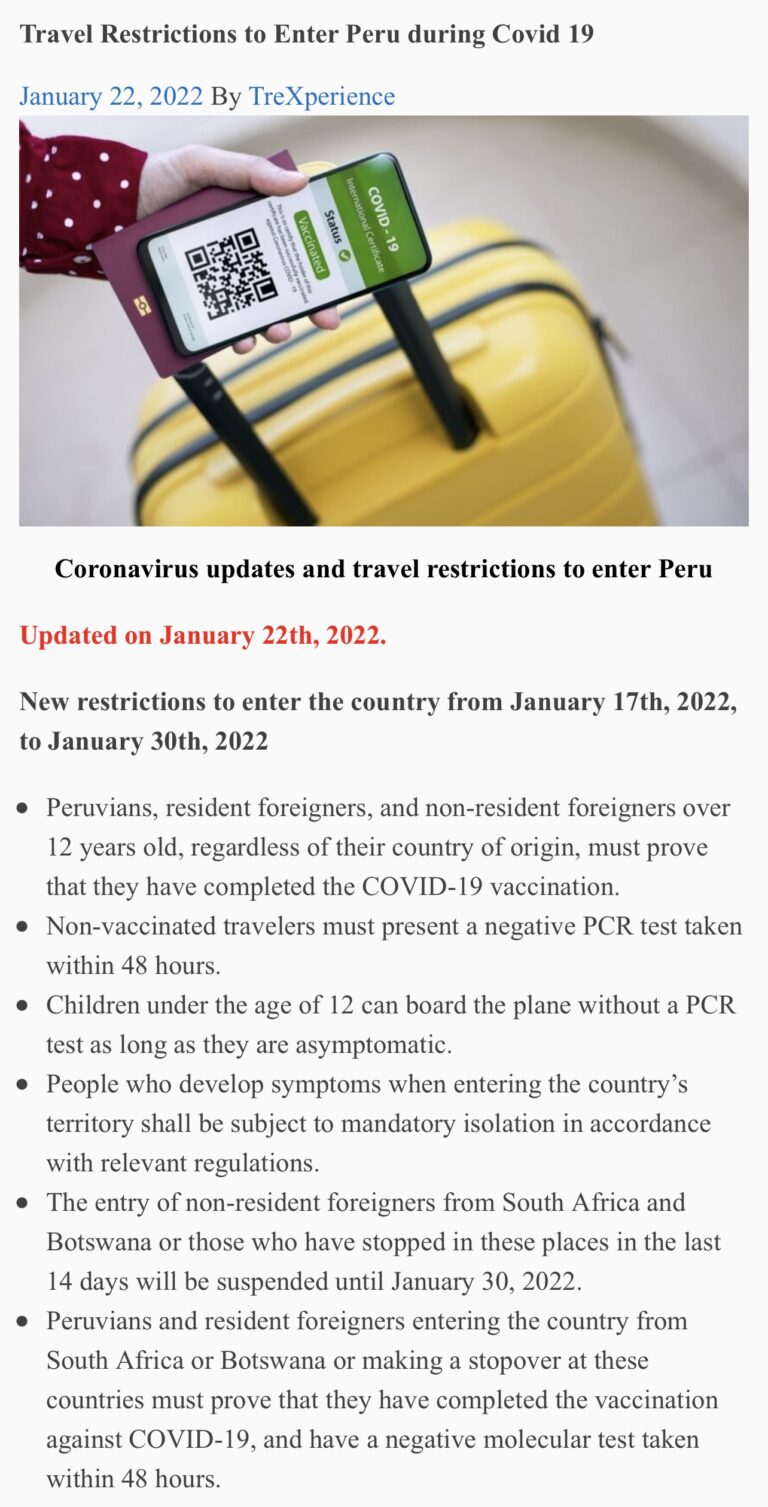
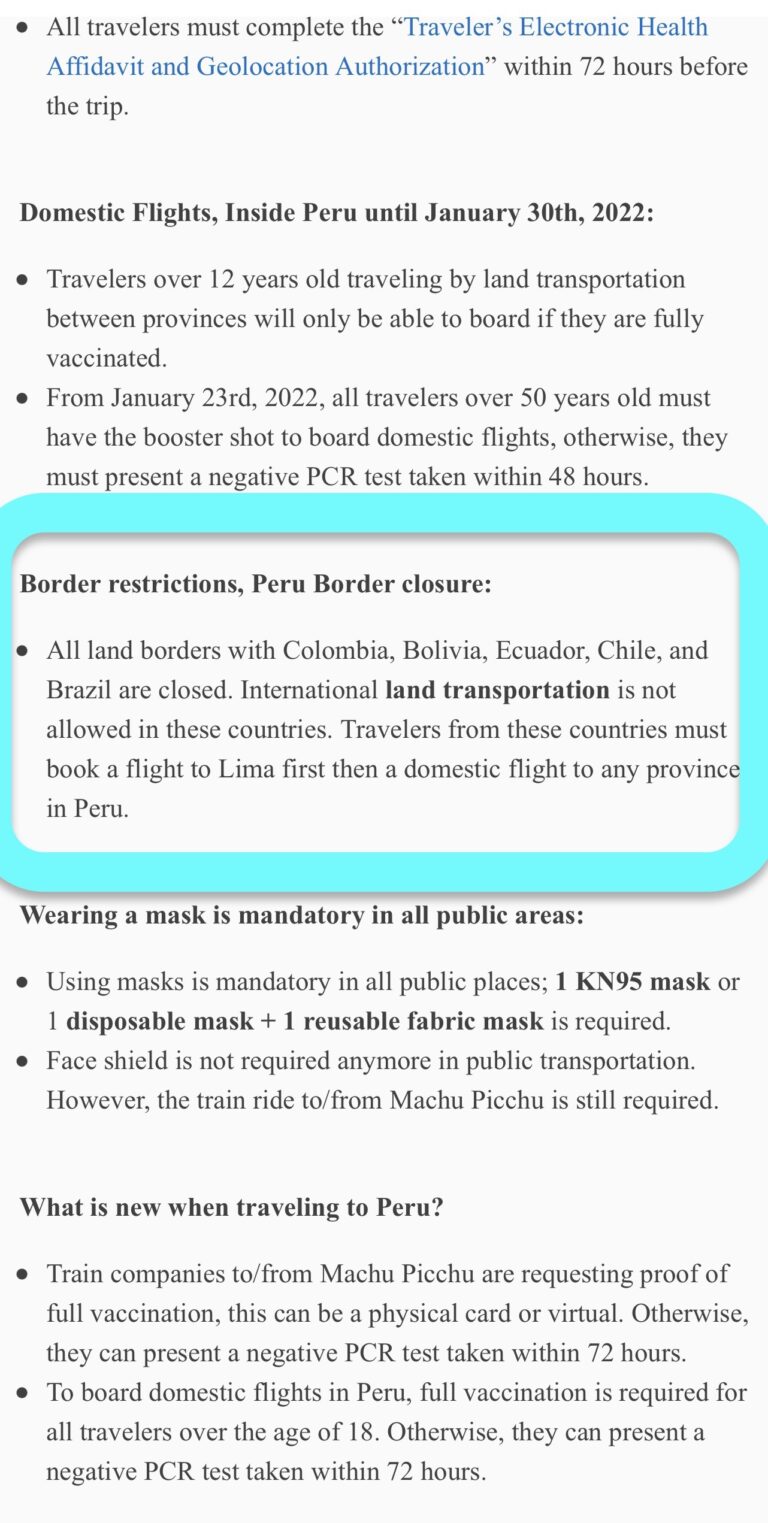
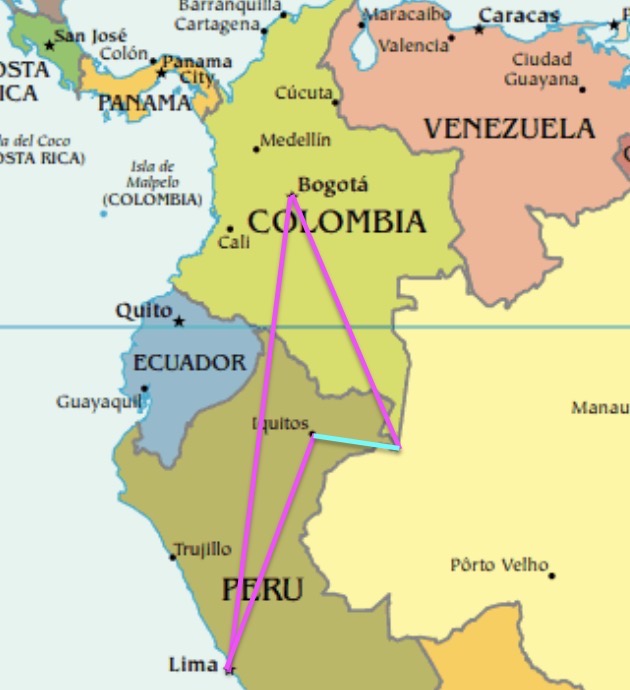
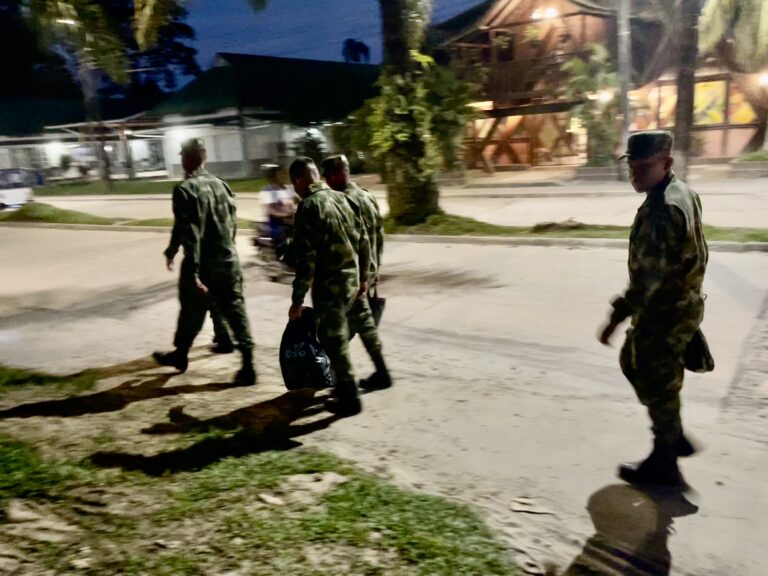
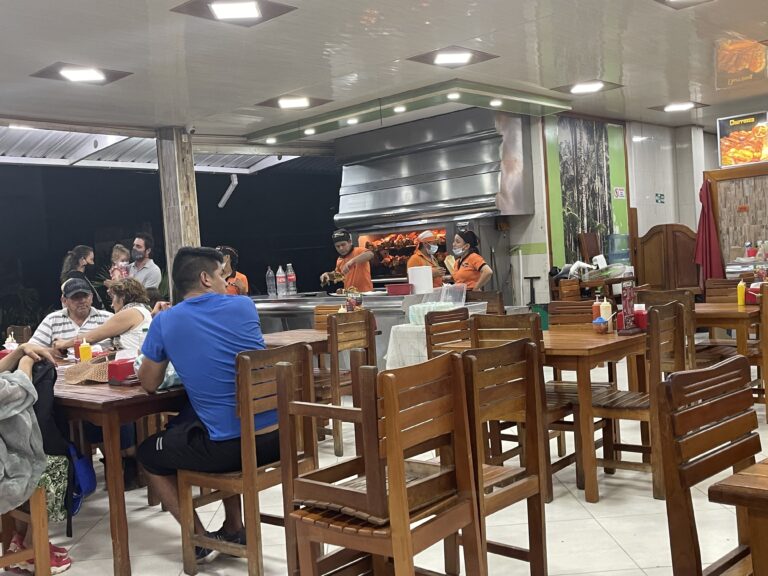
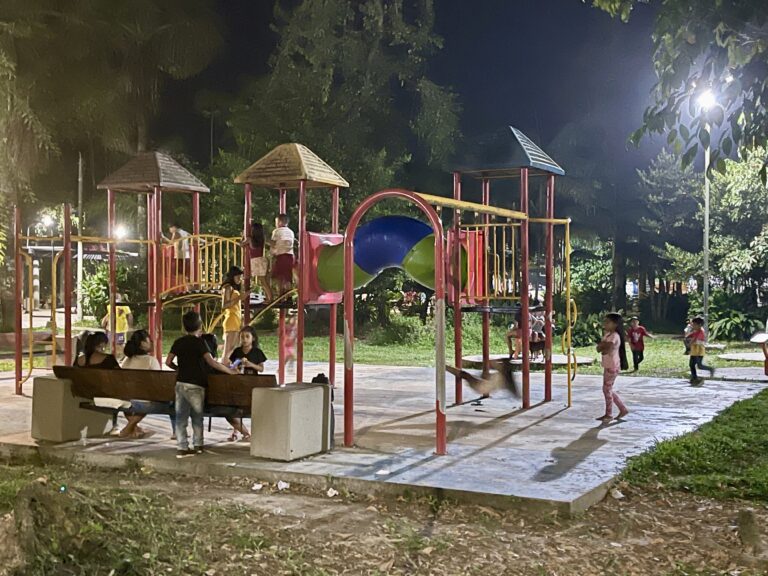
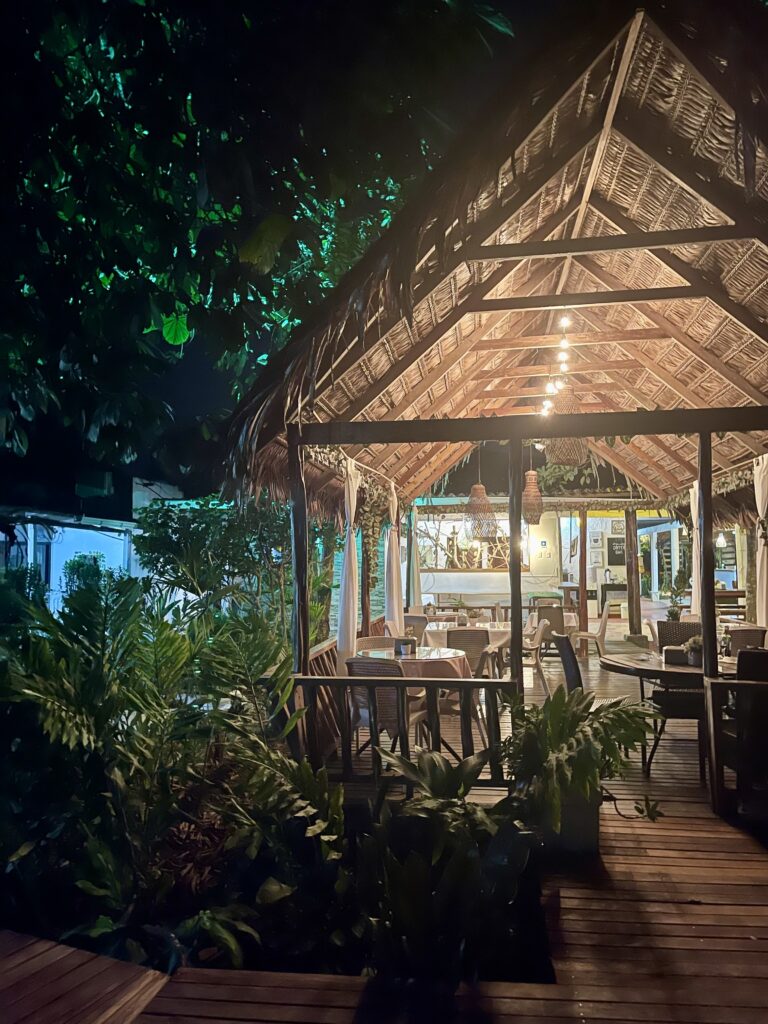
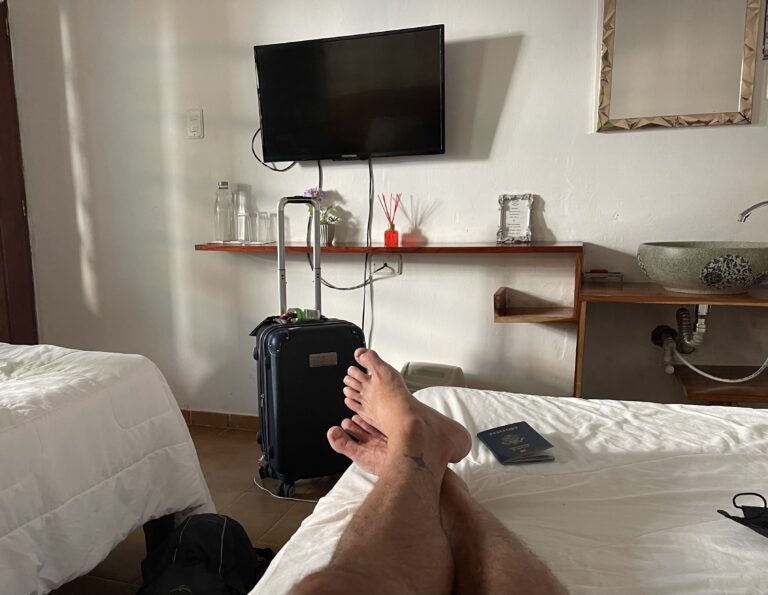
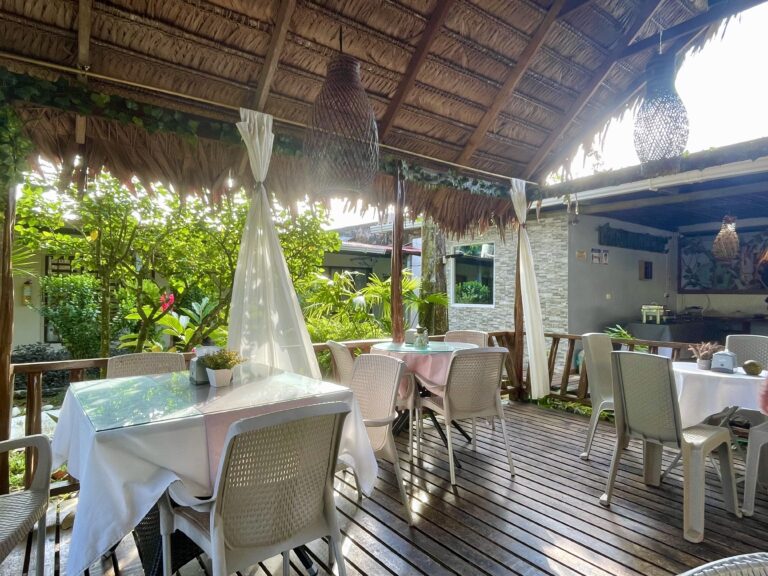
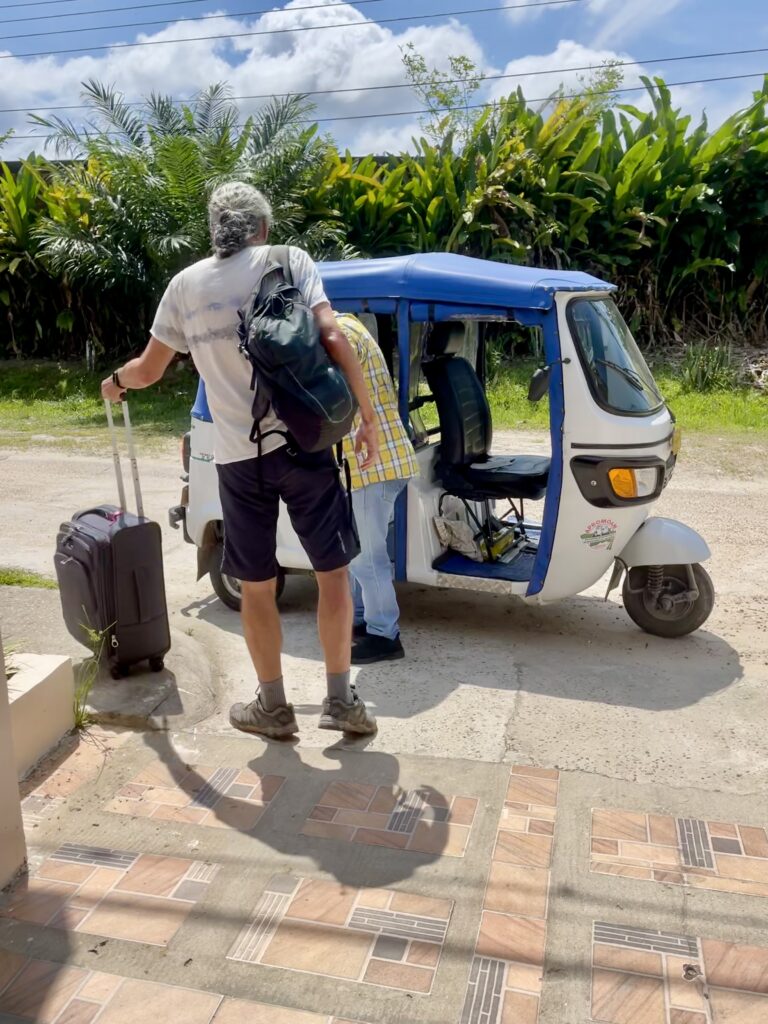
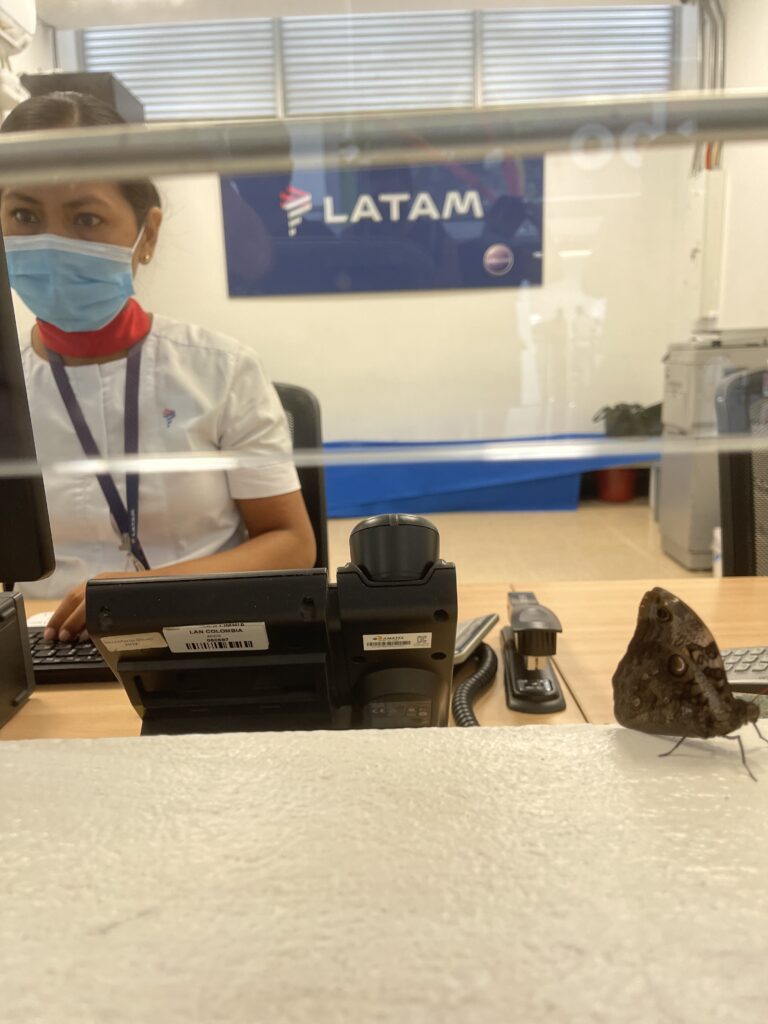
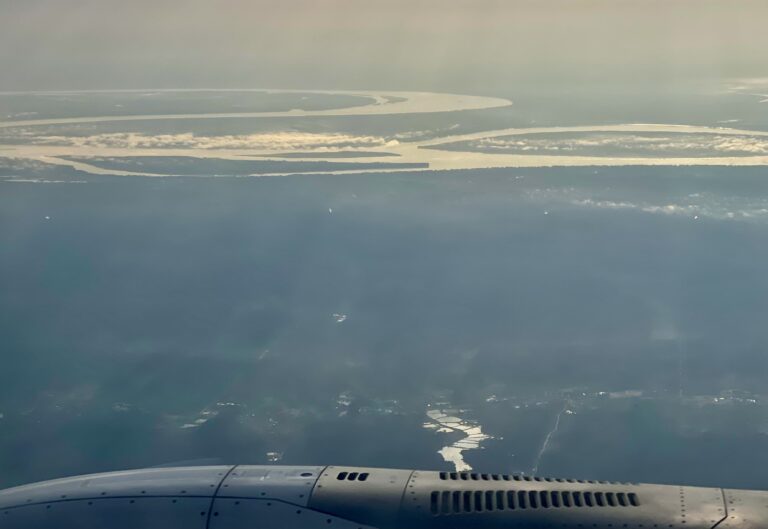
3 Responses
Riveting adventure, you guys are awesome.